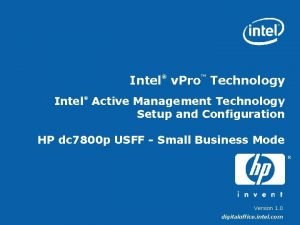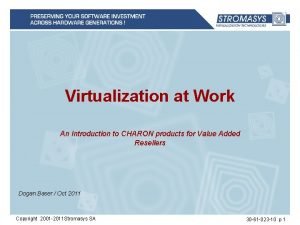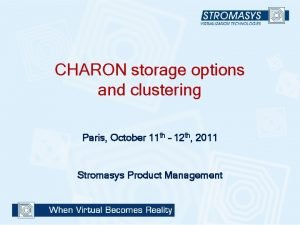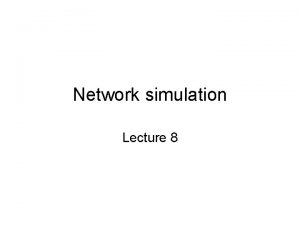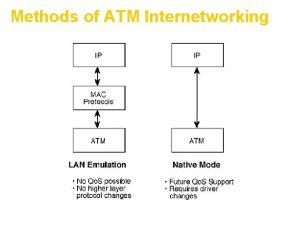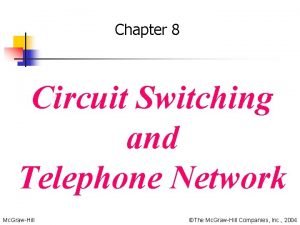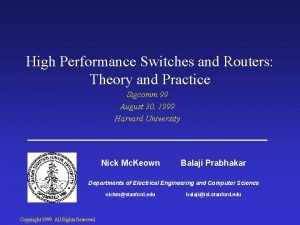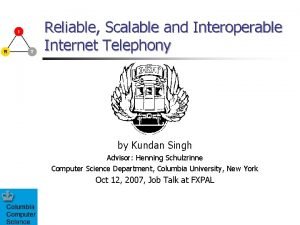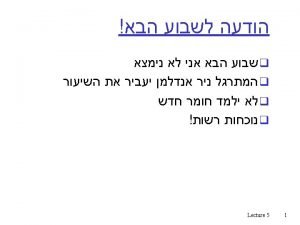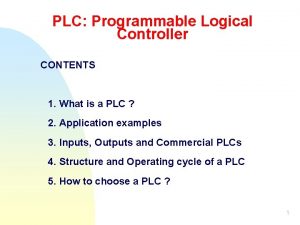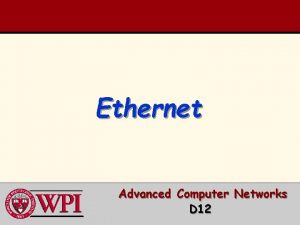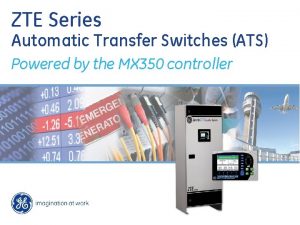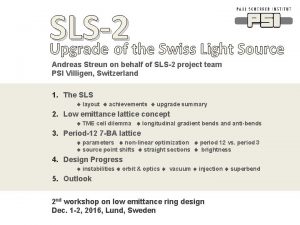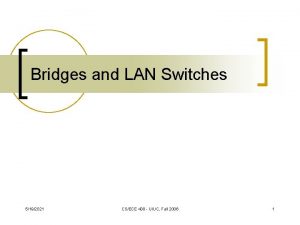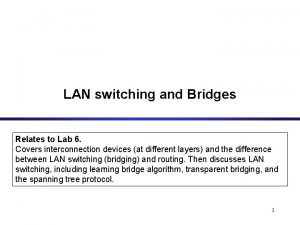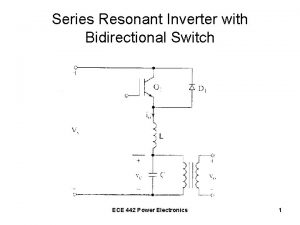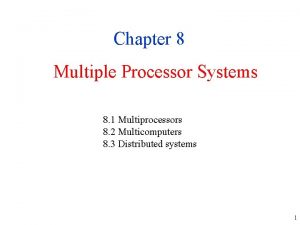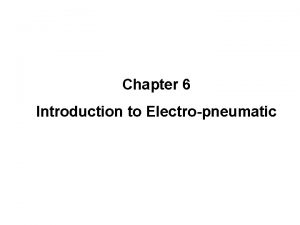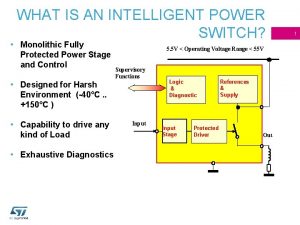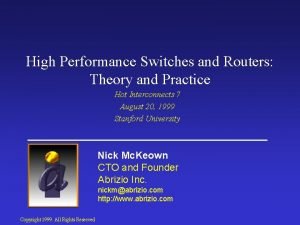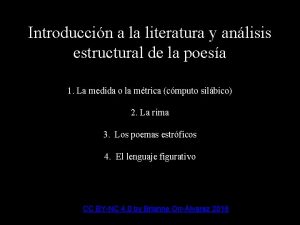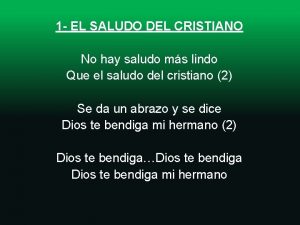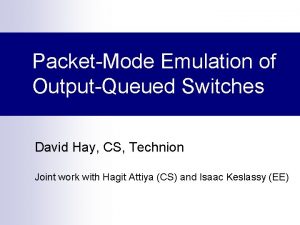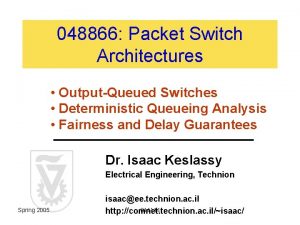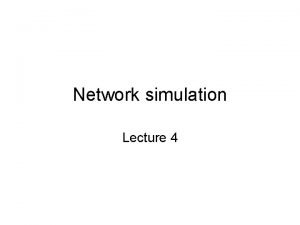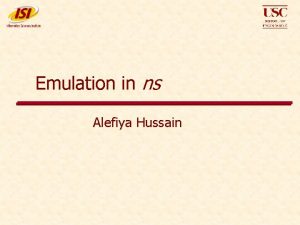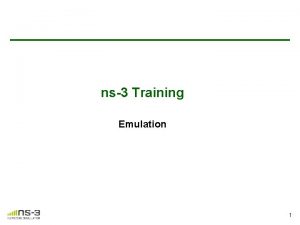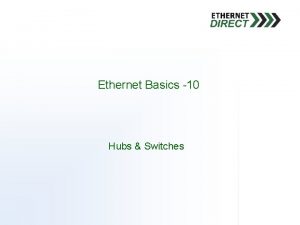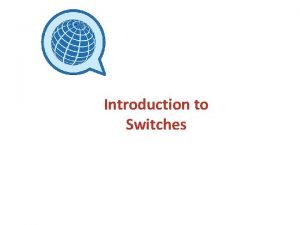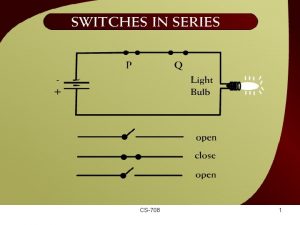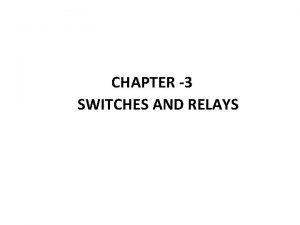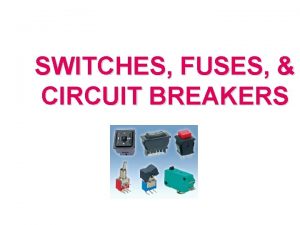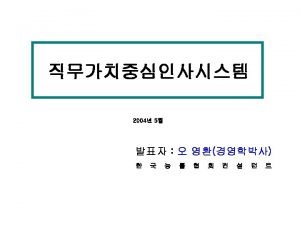PacketMode Emulation of OutputQueued Switches David Hay CS








![Packet-Mode Scheduling [Marsan et al. , 2002][Ganjali et al. , 2003][Turner, 2006] n n Packet-Mode Scheduling [Marsan et al. , 2002][Ganjali et al. , 2003][Turner, 2006] n n](https://slidetodoc.com/presentation_image/ccbfd10f249bcaf5184ae3bf95d3c522/image-9.jpg)




![Cell-Mode Emulation w/ S=2 [Chuang et al. , 1999] n 1 st Key Concept: Cell-Mode Emulation w/ S=2 [Chuang et al. , 1999] n 1 st Key Concept:](https://slidetodoc.com/presentation_image/ccbfd10f249bcaf5184ae3bf95d3c522/image-14.jpg)
![Cell-Mode Emulation w/ S=2 [Chuang et al. , 1999] n Stable Marriage (stable matching): Cell-Mode Emulation w/ S=2 [Chuang et al. , 1999] n Stable Marriage (stable matching):](https://slidetodoc.com/presentation_image/ccbfd10f249bcaf5184ae3bf95d3c522/image-15.jpg)
![Cell-Mode Emulation w/ S=2 [Chuang et al. , 1999] n Critical Cell First (CCF) Cell-Mode Emulation w/ S=2 [Chuang et al. , 1999] n Critical Cell First (CCF)](https://slidetodoc.com/presentation_image/ccbfd10f249bcaf5184ae3bf95d3c522/image-16.jpg)
![Cell-Mode Emulation w/ S=2 [Chuang et al. , 1999] n For each cell C Cell-Mode Emulation w/ S=2 [Chuang et al. , 1999] n For each cell C](https://slidetodoc.com/presentation_image/ccbfd10f249bcaf5184ae3bf95d3c522/image-17.jpg)




































- Slides: 53

Packet-Mode Emulation of Output-Queued Switches David Hay, CS, Technion Joint work with Hagit Attiya (CS) and Isaac Keslassy (EE)

Outline n n n Cell-Mode Scheduling vs. Packet-Mode Scheduling Impossibility of an Exact Emulation Speedup-RQD Tradeoff ¨ Emulation with S 4 ¨ Emulation with S 2 n n Emulation of OQ switch w/ bounded buffer Simulation Results

CIOQ Switches

Cell-Mode Scheduling

Cell-Mode Scheduling

Cell-Mode Scheduling

Trend towards Packet-Mode n Cell-mode scheduling is getting too hard ¨ Fragmentation and reassembly should work very fast, at the external rate ¨ Extra header for each cell loss of bandwidth n n For optical switches such fragmentation and reassembly are prohibitive Cell-mode schedulers are packet-oblivious ¨ Degradation of the overall performance

Packet-Mode Scheduling
![PacketMode Scheduling Marsan et al 2002Ganjali et al 2003Turner 2006 n n Packet-Mode Scheduling [Marsan et al. , 2002][Ganjali et al. , 2003][Turner, 2006] n n](https://slidetodoc.com/presentation_image/ccbfd10f249bcaf5184ae3bf95d3c522/image-9.jpg)
Packet-Mode Scheduling [Marsan et al. , 2002][Ganjali et al. , 2003][Turner, 2006] n n No need for fragmentation and reassembly Must ensure contiguous packet delivery over the fabric ¨ While input i delivers a packet to output j, neither input i nor output j can handle other packets. Can packet-mode schedulers provide similar performance guarantees as cell-mode schedulers?

Output Queuing Emulation n OQ switches are considered optimal with respect to queuing delay and throughput ¨ But too hard to implement in practice… n Emulation: Same input traffic same output traffic n How hard is it for cell-mode / packet-mode CIOQ switch to emulate OQ switch?

Output Queuing Emulation n OQ switches are considered optimal with respect to queuing delay and throughput ¨ But too hard to implement in practice… n Emulation: Same input traffic same output traffic n How hard is it for cell-mode / packet-mode CIOQ switch to emulate OQ switch?

Cell-Mode Emulation is Possible Easy with speedup S=N è N scheduling decisions every time-slot: n In the 1 st decision forward the cell of input 1 ¨ In the 2 nd decision forward the cell of input 2 ¨ ⋮ ¨ In the Nth decision forward the cell of input N

Cell-Mode Emulation is Possible Easy with speedup S=N è N scheduling decisions every time-slot: n In the 1 st decision forward the cell of input 1 ¨ In the 2 nd decision forward the cell of input 2 ¨ ⋮ ¨ In the Nth decision forward the cell of input N
![CellMode Emulation w S2 Chuang et al 1999 n 1 st Key Concept Cell-Mode Emulation w/ S=2 [Chuang et al. , 1999] n 1 st Key Concept:](https://slidetodoc.com/presentation_image/ccbfd10f249bcaf5184ae3bf95d3c522/image-14.jpg)
Cell-Mode Emulation w/ S=2 [Chuang et al. , 1999] n 1 st Key Concept: Slackness of a cell (in the input side) L(C) = OC(C) - IT(C) Output Cushion: (“good guys”) n Slackness may decrease by at most. Input 2 in. Thread: every(“bad time-slot guys”) How many cells are queued in How many cells proceed C in ¨ A cell leaves the output-buffer of C’s the destination of C OC-input-port ¨ A cell at the input and is queuedits before C buffer? IT++ destination, and arrives should leave then. OQ switchslackness before C Initial can be made non-negative ¨ When C arrive, Insert it in the OC(C)th place of its input buffer. Plan: Ensure that slackness always increases by 2 è Slackness is never negative è All cells are delivered on time
![CellMode Emulation w S2 Chuang et al 1999 n Stable Marriage stable matching Cell-Mode Emulation w/ S=2 [Chuang et al. , 1999] n Stable Marriage (stable matching):](https://slidetodoc.com/presentation_image/ccbfd10f249bcaf5184ae3bf95d3c522/image-15.jpg)
Cell-Mode Emulation w/ S=2 [Chuang et al. , 1999] n Stable Marriage (stable matching): Given two equal-size sets M, W and preference lists from every m M, w W. Find a matching in which there are no two pairs (m, w), (m’, w’) s. t. ¨m prefer w’ over w ¨ w’ prefer m over m n Classical problem in CS ¨ Stable marriage always exists ¨ Many algorithms. .
![CellMode Emulation w S2 Chuang et al 1999 n Critical Cell First CCF Cell-Mode Emulation w/ S=2 [Chuang et al. , 1999] n Critical Cell First (CCF)](https://slidetodoc.com/presentation_image/ccbfd10f249bcaf5184ae3bf95d3c522/image-16.jpg)
Cell-Mode Emulation w/ S=2 [Chuang et al. , 1999] n Critical Cell First (CCF) algorithm performs stable marriage at each decision: ¨M is the set of inputs, W is the set of outputs ¨ i prefers o 1 over o 2 if there is a cell for o 1 that is queued before all cells for o 2 ¨ o prefers i 1 over i 2 if there is a cell from i 1 that should leave before all cells from i 2
![CellMode Emulation w S2 Chuang et al 1999 n For each cell C Cell-Mode Emulation w/ S=2 [Chuang et al. , 1999] n For each cell C](https://slidetodoc.com/presentation_image/ccbfd10f249bcaf5184ae3bf95d3c522/image-17.jpg)
Cell-Mode Emulation w/ S=2 [Chuang et al. , 1999] n For each cell C from input-port i to output port j, and each scheduling decision: ¨C is forwarded (and we don’t care about it) ¨ C’ was forwarded from i, and i preferred to forward it IT-¨ C’ was forwarded to j, and j preferred to receive it OC++ n Two scheduling decisions every time-slots Slackness always increases by 2

Cell-Mode Emulation Easy with speedup S=N n Possible with speedup S=2 (w/ CCF) n ¨ Lower bound: S≥ 2 -1/N is required [Chuang et al. , 1999] What is the speedup required for packet-mode emulation?

Outline n n n Cell-Mode Scheduling vs. Packet-Mode Scheduling Impossibility of an Exact Emulation Speedup-RQD Tradeoff ¨ Emulation with S 4 ¨ Emulation with S 2 n n Emulation of OQ switch w/ bounded buffer Simulation Results

Packet-Mode Emulation is Impossible n Regardless of speedup ¨ Even with speedup S=N

Packet-Mode Emulation is Impossible

Packet-Mode Emulation is Impossible

Packet-Mode Emulation is Impossible

Packet-Mode Emulation is Impossible

Packet-Mode Emulation is Impossible

Outline n n n Cell-Mode Scheduling vs. Packet-Mode Scheduling Impossibility of an Exact Emulation Speedup-RQD Tradeoff ¨ Emulation with S 4 ¨ Emulation with S 2 n n Emulation of OQ switch w/ bounded buffer Simulation Results

Emulation w/ Relative Queuing Delay The CIOQ switch is allowed a bounded lag behind the shadow OQ switch F Exact same behavior as the optimal OQ switch, but with some extra delay n ¨ Called relative queuing delay Can we provide packet-mode OQ emulation with bounded RQD and small speedup?

Our Results: Speedup-RQD tradeoff Speedup 2 Lmax= maximum packet size Generalization of cell-mode Lower bound on RQD (known value) scheduling with S=2: (even with infinite speedup) Taking each packet of size ≤ Lmax as one huge cell 4 2 Lower bound on the speedup (from cell-mode scheduling) RQD

Intuition for Emulation Algorithms Packet Mode CIOQ Cell Mode CIOQ w/ S=2 Packet Mode OQ

PIFO Cell-Mode OQ Switch n FIFO = First-In First-Out

PIFO Cell-Mode OQ Switch FIFO = First-In First-Out n PIFO = Push-In First-Out n

PIFO Cell-Mode OQ Switch FIFO = First-In First-Out n PIFO = Push-In First-Out n F FIFO Packet-Mode OQ Switch is a PIFO Cell-Mode Switch

Underlying CCF Algorithm n Cell-Mode CIOQ w/ CCF (and speedup S=2) emulates any PIFO cellmode OQ switch [Chuang et al. , 1999] G But, CCF does not maintain contiguous packet forwarding over the fabric! Packet Mode CIOQ Cell Mode CIOQ w/ S=2 PIFO Cell-Mode OQ = Packet Mode OQ

Intuition for Emulation Algorithms Packet Mode CIOQ Two sub-steps: 1. Framing 2. Contiguous Decomposition Cell Mode CIOQ w/ S=2 Packet Mode OQ

Frame-Based Schedulers Works in pipelined frame-based manner time Within each frame: n Build a demand matrix for this frame n Schedule the demand matrix of the previous frame

Building the Demand Matrix n At each frame of size T, CCF forwards at most 2 T cells from each input and to each output. + + + + + + Number of cells CCF sent from input 1 to output 1 in the last frame ≤ 2 T ≤ ≤ 2 T 2 T Problem: A packet may span several frames.

Building the Demand Matrix Count only packets whose last cell is forwarded by the CCF in the frame n Each row/column in the matrix is bounded by 2 T+N(Lmax-1) n ¨ For each input-output pair only cells of one additional packet can be added. n Translates into RQD of 2 T+(Lmax-2).

Intuition for Emulation Algorithms Packet Mode CIOQ Two sub-steps: 1. Framing 2. Contiguous Decomposition Cell Mode CIOQ w/ S=2 Packet Mode OQ

Decomposing the Demand Matrix n Challenge: Decompose the matrix into permutations while maintaining contiguous packet delivery. ¨ n Each permutation dictates a scheduling decision. First try: optimal Birkhoff von-Neumann decomposition results in 2 T+N(Lmax-1) permutations.

Contiguous Greedy Decomposition n To maintain contiguous packet delivery: ¨ If (i, j) was matched in iteration t-1 and there are more (i, j) cells to schedule keep for iteration t. n Find a greedy matching for the rest of the matrix. è Speedup: RQD: 2 T+Lmax-1

Our Results: Speedup-RQD tradeoff Speedup 2 Lmax S=4+ (N(Lmax-1))/T RQD = 2 T+Lmax-1 Next… 4 2 RQD

Intuition for Emulation Algorithms Packet Mode CIOQ Two sub-steps: 1. Framing 2. Contiguous Decomposition Cell Mode CIOQ w/ S=2 Packet Mode OQ

Emulation w/ S 2 - Framing Keep a separate demand matrix for every possible packet size n Example: Possible packets sizes are 3, 4, 6 n # of size 3 packets # of size 4 packets # of size 6 packets

Emulation w/ S 2 - Framing Concatenate packets of the same size into mega-packets of size k=LCM(1, …, Lmax) n Leftover matrix for each size m n Mega size Packets 3 (of size 12) size 4 size 6

Emulation w/ S 2 - Framing Concatenate packets of the same size into mega-packets of size k=LCM(1, …, Lmax) n Leftover matrix for each size m n Mega Packets (of size k=12) size 3 size 4 size 6

Emulation w/ S 2 - Framing Concatenate packets of the same size into mega-packets of size k=LCM(1, …, Lmax) n Leftover matrix for each size m n Mega Packets (of size 12) size 3 size 4 (leftovers) size 6

Emulation w/ S 2 - Framing Concatenate packets of the same size into mega-packets of size k=LCM(1, …, Lmax) n Leftover matrix for each size m n Mega Packets (of size 12) size 3 size 4 size 6 (leftovers)

Emulation w/ S 2 - Framing Concatenate packets of the same size into mega-packets of size k=LCM(1, …, Lmax) n Leftover matrix for each size m n Mega Packets (of size 12) size 3 size 4 size 6 (leftovers)

Emulation w/ S 2 - Framing n Sum of each row/column is bounded ¨ For mega packets matrix: ≤ (2 T+N(Lmax-1))/k ¨ For each leftover matrix of size m: ≤ N(k -1)/m < 12/3 Mega Packets (of size 12) < 12/4 < 12/6 size 3 size 4 size 6 (leftovers)

Emulation w/ S 2 - Decomposition n Optimally decompose (w/ Birkhoff von. Neumann) the mega-packets matrix and then the leftover matrices Hold each permutation k times for contiguous (mega) -packet delivery Bound on the megapackets matrix

Our Results: Speedup-RQD tradeoff Speedup 2 Lmax S=4+ (N(Lmax-1))/T RQD = 2 T+Lmax-1 4 S=2+(Nk. Lmax-1)/T RQD = 2 T+Lmax-1 2 RQD

Wrap-up Packet-mode scheduling can be done with the same speedup as cell-mode scheduling G With the price of bounded RQD FFuture work: lower bounds ? ?

Thank You!
 Sol terminal emulation mode
Sol terminal emulation mode Charon vax
Charon vax Legacy charon vax
Legacy charon vax Intel avx emulator
Intel avx emulator Target trial emulation
Target trial emulation Simulation vs emulation
Simulation vs emulation Emulated local area network
Emulated local area network La vida te da momentos
La vida te da momentos Hay dias llenos de viento hay dias llenos de furia
Hay dias llenos de viento hay dias llenos de furia Ahi momentos en la vida
Ahi momentos en la vida Hay dias llenos de viento hay dias llenos de furia
Hay dias llenos de viento hay dias llenos de furia Dicen que la vida son momentos
Dicen que la vida son momentos Hay momentos en la vida
Hay momentos en la vida A switch combines crossbar switches in several stages
A switch combines crossbar switches in several stages High performance switches and routers
High performance switches and routers Mercury switches in cars
Mercury switches in cars Kundan switches models
Kundan switches models Types of switching
Types of switching Programmable logic controller
Programmable logic controller Slotted optical switches
Slotted optical switches Cisco 100 series
Cisco 100 series Zte ats
Zte ats X-ray cwo
X-ray cwo Which type of reaction
Which type of reaction We should not touch electric switches with wet hands. why
We should not touch electric switches with wet hands. why Schneider unica switches
Schneider unica switches The resources need to be reserved during the setup phase in
The resources need to be reserved during the setup phase in Bridges vs switches
Bridges vs switches Netgear gsm/fsm fully managed switches
Netgear gsm/fsm fully managed switches Two technicians are discussing schematic symbols
Two technicians are discussing schematic symbols Bridges vs switches
Bridges vs switches High performance switches and routers
High performance switches and routers Ece 442
Ece 442 Multiple processor systems
Multiple processor systems Electro pneumatic symbols
Electro pneumatic symbols Intelligent power switch
Intelligent power switch Refurbished netgear gsm/fsm fully managed switches
Refurbished netgear gsm/fsm fully managed switches High performance switches
High performance switches Cisco rvs4000 throughput
Cisco rvs4000 throughput Hay que aprender a resistir ni a irse ni a quedarse
Hay que aprender a resistir ni a irse ni a quedarse Porque las ovejas blancas comen más que las negras
Porque las ovejas blancas comen más que las negras Partes de un texto teatral
Partes de un texto teatral Detras de cada idolo hay un demonio
Detras de cada idolo hay un demonio Hay muchas formas de alabar su nombre
Hay muchas formas de alabar su nombre Hacedlo todo decentemente y en orden
Hacedlo todo decentemente y en orden Méthode hay grille
Méthode hay grille Se puede ser infiel pero no desleal
Se puede ser infiel pero no desleal Poema con rima consonante
Poema con rima consonante Como hacerte saber que siempre hay tiempo
Como hacerte saber que siempre hay tiempo Hay personas que nos hablan y ni las escuchamos
Hay personas que nos hablan y ni las escuchamos Maranatha, lời nguyện thiết tha
Maranatha, lời nguyện thiết tha Solo nos llego la tarde
Solo nos llego la tarde Los dos tipos de pecados
Los dos tipos de pecados No hay un saludo mas lindo que el saludo de un cristiano
No hay un saludo mas lindo que el saludo de un cristiano
